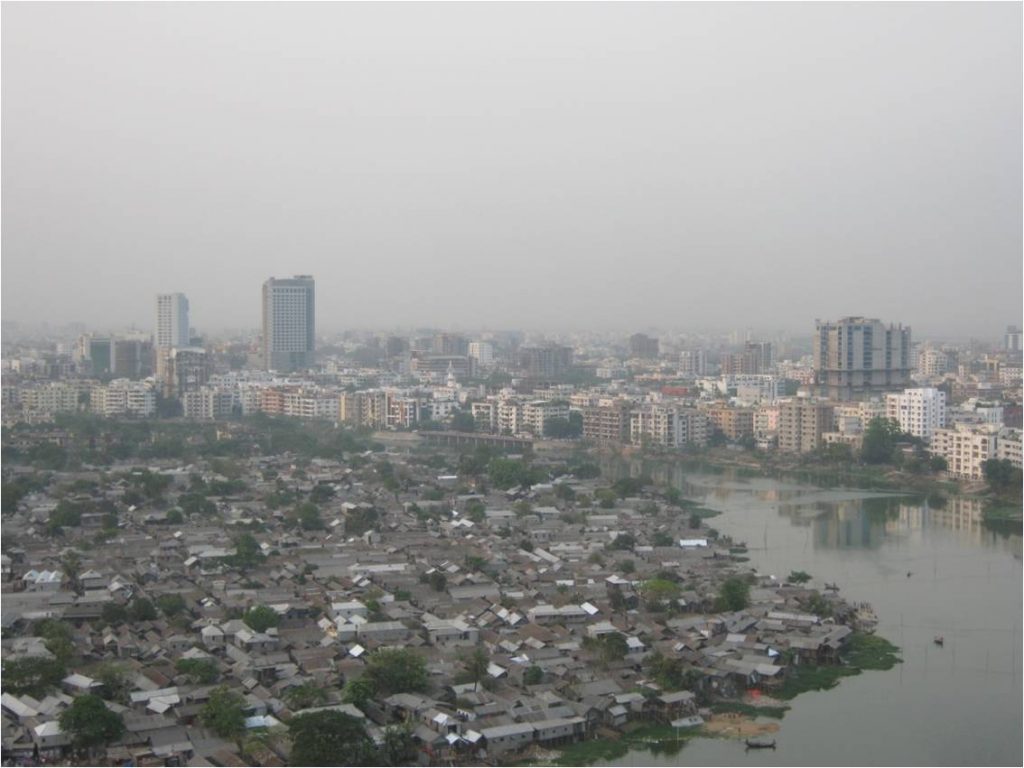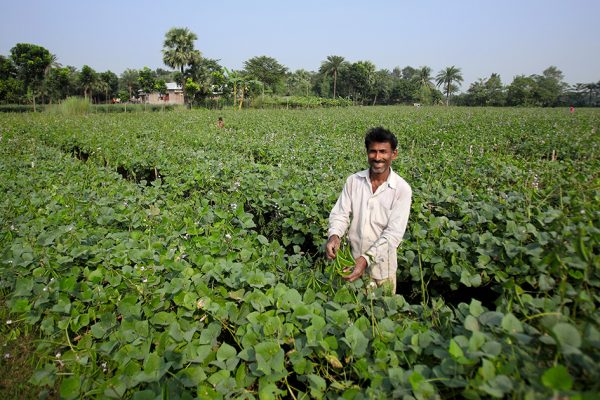Unplanned urbanisation: a road block in eradicating poverty in Bangladesh
Reading Time: 2 minutes
reflects that its development was far more consistent compared to the development of neighbouring countries like Pakistan and Nepal. Although Bangladesh has progressed significantly in adverting maternal and neonatal deaths, reducing transmission of communicable diseases, ensuring food security for all, but poverty still remains as a frontline concern for the country.
Bangladesh has experienced an average economic growth of 5.58 percent over the last 18 years leading to a persistent increase in the Human Development Index (HDI) reported by United Nations’ Development Programme. The HDI profile of Bangladesh
reflects that its development was far more consistent compared to the development of neighbouring countries like Pakistan and Nepal. Although Bangladesh has progressed significantly in adverting maternal and neonatal deaths, reducing transmission of communicable diseases, ensuring food security for all, but poverty still remains as a frontline concern for the country.
According to UNDP’s Human Development Report 2013 , 57.8 percent of the population lives in multidimensional poverty while additional 21.2 percent are vulnerable to multiple deprivations including access to healthcare services, education and other living conditions. The report further stated that individuals living above the income poverty line may still suffer deprivation in education, health and other living conditions. With less than 1000 days remaining to attain the Millennium Development Goals, it is high time that the country re-evaluates its approach in achieving the MDGs by the stipulated time.
To understand why economic growth and improvement in overall HDI do not completely overlap each other, identifying the blockades towards poverty eradication should be the first way forward.
Relevant researches mirror the fact that despite improvement in HDI and economic development of Bangladesh, socioeconomic conditions have not improved substantially. Unplanned urbanisation can be tagged as one of the major factors why economic emancipation has not been translated to socioeconomic development across the country. According to the World Bank, about 12.66% of Bangladesh’s total population of 150.49million lives in economic hubs of Dhaka and Chittagong . The high concentration of population into specific regions has led to regional differentiations and dispersed income generation and distribution, represented by GDP per capita, which in turn have hindered the uniform growth of socioeconomic infrastructures across Bangladesh.
Moreover, geographical and administrative setting along with infrastructural and resource accessibility has stimulated people to relocate and establish new businesses in the growing economic hubs of Dhaka and Chittagong. The rapid growth along the economic hubs has induced the growth of adjoining secondary towns encouraging and leading to intra-city migration towards these regions.
The bio-product of unplanned development and regional growth is the emergence of a floating population who lead a life of uncertainty. Most of them lack access to education, basic healthcare facilities, safe drinking water, legal services and other basic rights. Research has also revealed that a part of the floating population assertively ignore accessing the available services because they are unable to afford them or simply because they perceive them as a high cost burden.
The challenge in this situation is to minimise regional differences and streamline the deprived population to the overall economic growth which would also reduce income gaps among the population. It is obvious that reverting unplanned urbanisation is virtually impossible but initiatives can be taken to mitigate externalities and improve the lifestyle of the affected population.
Interventions to re-track unplanned development can be formulated from two broader perspectives; firstly, by advocating to alter national policy and decentralise economic activities; and secondly, by creating or inducing demand in low-demand areas. The main objectives of the initiative would be to reduce income disparity and regional discrepancies thus reducing multidimensional poverty in Bangladesh. It could be stated that unless multidimensional poverty is being minimised, achieving other socioeconomic goals would be difficult to achieve.






